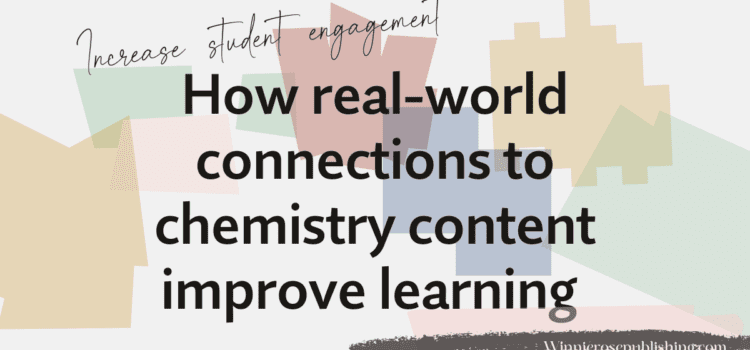
Chemistry educators have struggled for decades about how to teach the subject in a way that is engaging and interesting to students while connecting to examples of chemistry in everyday life.
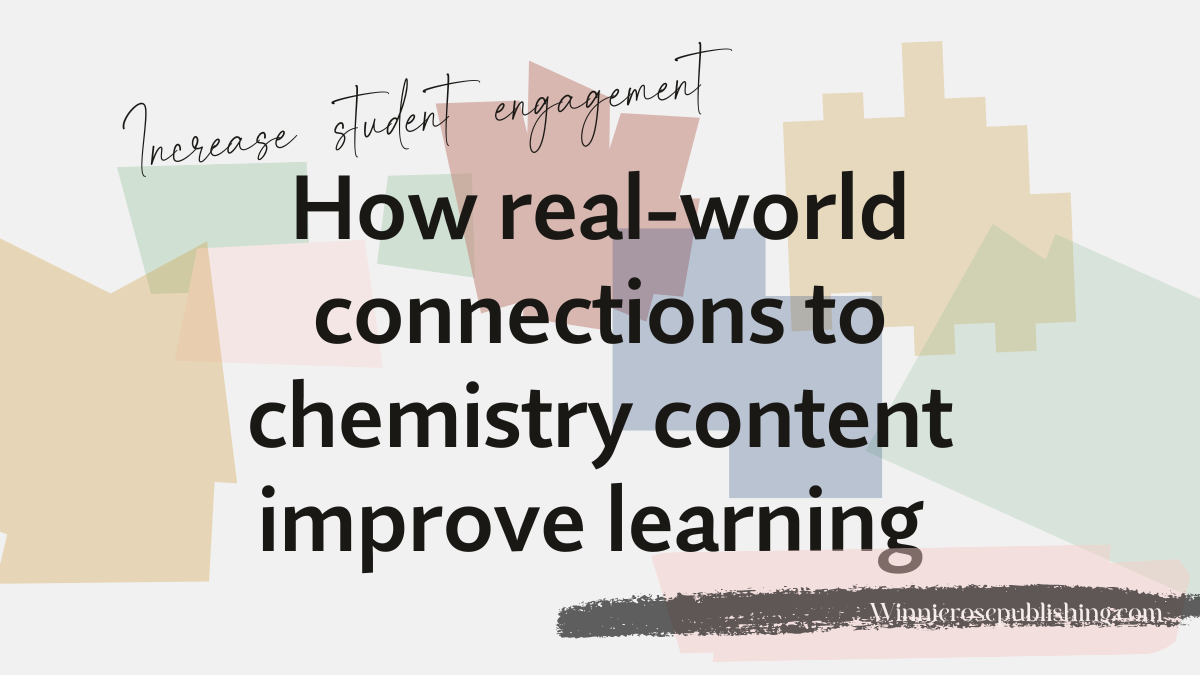
When I was going through my education, the predominant model of teaching was ‘sage on the stage’. The instructor presented material and it was the student’s job to understand it. The connections to real-world examples were off-handed, tangential statements tossed in as after-thoughts to the material. It was assumed that students would care about the material because they were told to care, in order to get the grade.
Back in those days, the student had to make connections on their own. Our education system in America was structured so that a student could compartmentalize knowledge and never need to know how it related to other areas of study or to the world around them.
Using real-world examples of chemistry in everyday life in the classroom
We now understand that students will be more engaged if they see how the material relates to their everyday lives. For many years, textbooks have included those real-world connections in special focus boxes in the chapters of content. Students generally skipped reading those and instructors never really addressed them. Perhaps we thought that taking the time to introduce real-world examples would take away from the time to teach the content.
There is a way to include real-world examples while not interfering with the time to introduce the content. I believe that the easiest option is to use practice problems that are real. Why use a worksheet of practice problems where all the examples are things like ‘find the molarity of 12.5 g sodium hydroxide dissolved in a solution of 100 mL’? How does a worksheet of problems like ‘convert 4.32 moles of calcium chloride to grams’ seem like a good idea?
Perhaps it is because your predecessor left you a file cabinet of such worksheets. Perhaps you find it easier to generate a long problem set of random, disconnected examples such as above.
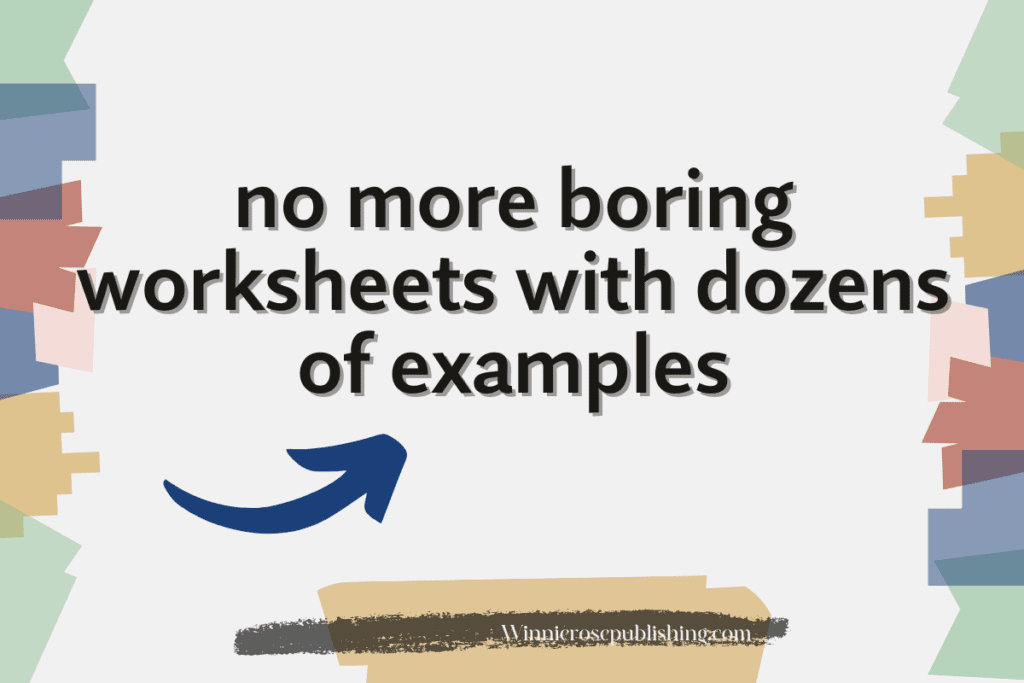
But are these long and boring worksheets really best for your students? Sure, the mechanics of the problem-solving are covered. And yes, the students get plenty of practice working on problems. But what is their enthusiasm level? I’ll bet it is not too high.
Real-world learning in the classroom improves engagement
Think about calculating the number of moles of various compounds in an oatmeal cookie. Or the concentration of sugar in a Coca-Cola. What about the molarity of sodium hypochlorite in bleach. Or the number of gold atoms that would fit on the surface of a dollar bill. How about the wavelength of the radio waves coming from the local radio station. Don’t those sound more interesting to you than a classic worksheet with 50 examples?
A motivated student will indeed do the work, no matter what format it is in. They engage in teacher-pleasing behavior and they finish the task because they want to earn the grade. However, I think that a large portion of my job is to get students excited about learning and excited about chemistry, or at the very least see the point in learning it.
Real world contexts
By having connections to everyday things that students encounter, students will see the reasons for learning about the material and they will form additional connections to things they have learned.
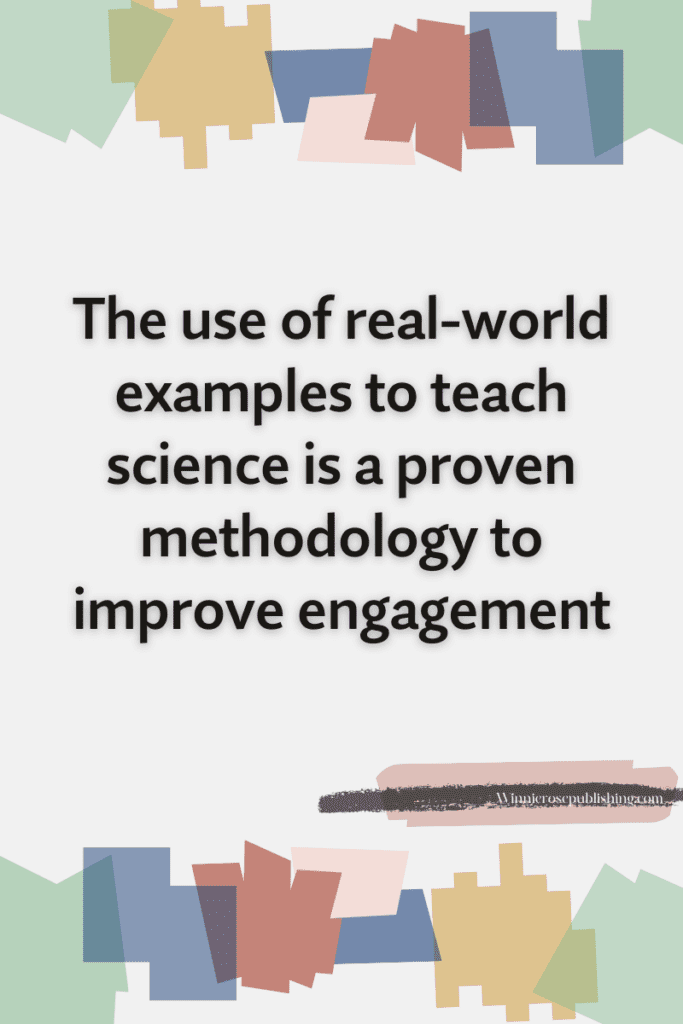
There is considerable evidence about the benefits of using real-world activities in your chemistry classroom. Some examples are listed here
Chemistry Isn’t Boring: Inspiring Students with Real-world, Project-based Lessons by Nate Hassman
Cool Classes: “Chemistry in Everyday Life” from the Haverblog
Using Analogies to Teach Chemistry by Mary Courtney on the Edutopia blog
Learning Chemistry Through Real World Applications at the Homeschool Scientist blog
Alright, you have decided this might be worth a try, but your file cabinet (or your Google Drive) is filled with old-style homework assignments, and lecture materials, and lab experiments. What is a person to do? Where does one find these so-called real-world activities? And how do you make it feel like a part of your plan and not an after thought that you tacked on at the last minute? And how much of these new activities is enough?
Let’s try to address these one at a time. There are lots of sources of real-world activities. The publisher of your curriculum materials probably has some options, but sometimes these are just a few paragraphs set aside on a page of a textbook. There is not always a clear way to integrate into your classroom.
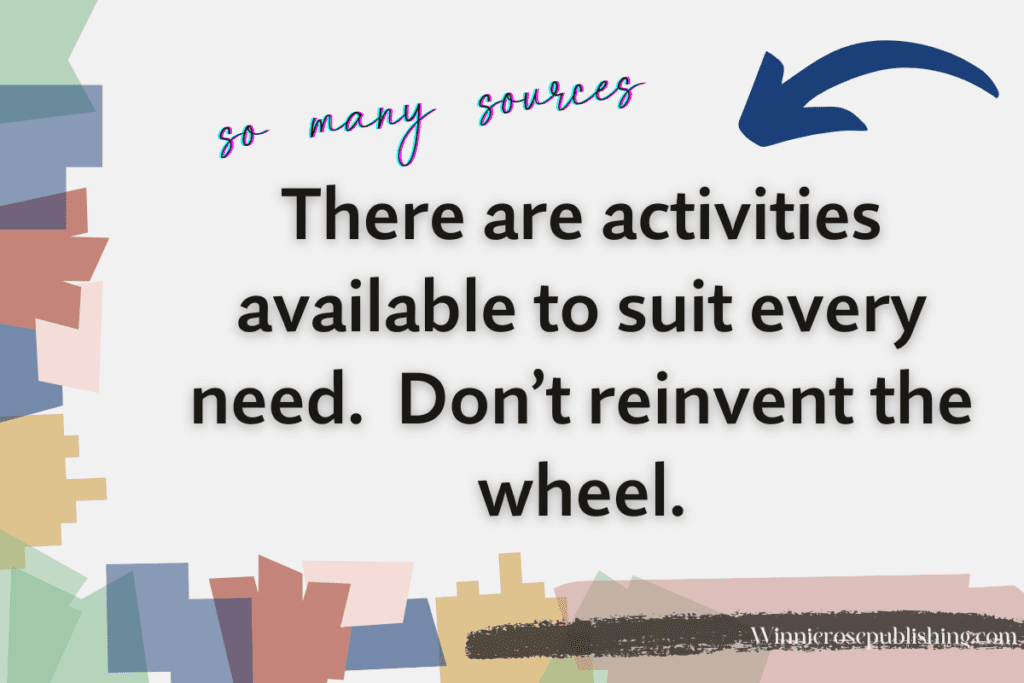
Another source is the American Association of Chemistry Teachers which is an extension of the American Chemical Society. There are activities, lesson plans, lecture materials, and lab experiments on all sorts of topics, and at many levels – from middle school to advanced placement. There is an annual membership, but in my opinion it is well worth it.
Examples of chemistry in everyday life are numerous
If you just need a few activities to get you started, or you just want an activity on a particular topic, the TeacherPayTeachers is a good source of materials to integrate examples of chemistry in everyday life.
In my TPT store, I have an activity on moles, grams, and Avogadro’s number using the ingredients in oatmeal cookies. A previous post on this blog addresses the oatmeal cookie activity in more detail. A homework activity involves the radius of a gold atom, the size of a dollar bill, and the market price of gold to determine the worth of the paper money, if it were made of a single layer of gold atoms. The focus of this assignment is mostly unit conversions and geometry.
Suppose you are working on concentrations of solutions. Why not try an activity that calculates the mass percent, volume percent, or molarity of an active ingredient of consumer products such as rubbing alcohol, vinegar, shampoo, or coffee? A previous post addresses this too.
This allows you to integrate activities one at a time to see how they work with your students. Many items on TPT are designed such that printing things is the only prep work. I mean, who has time to gather physical supplies to teach a class when you decide to incorporate a new activity?
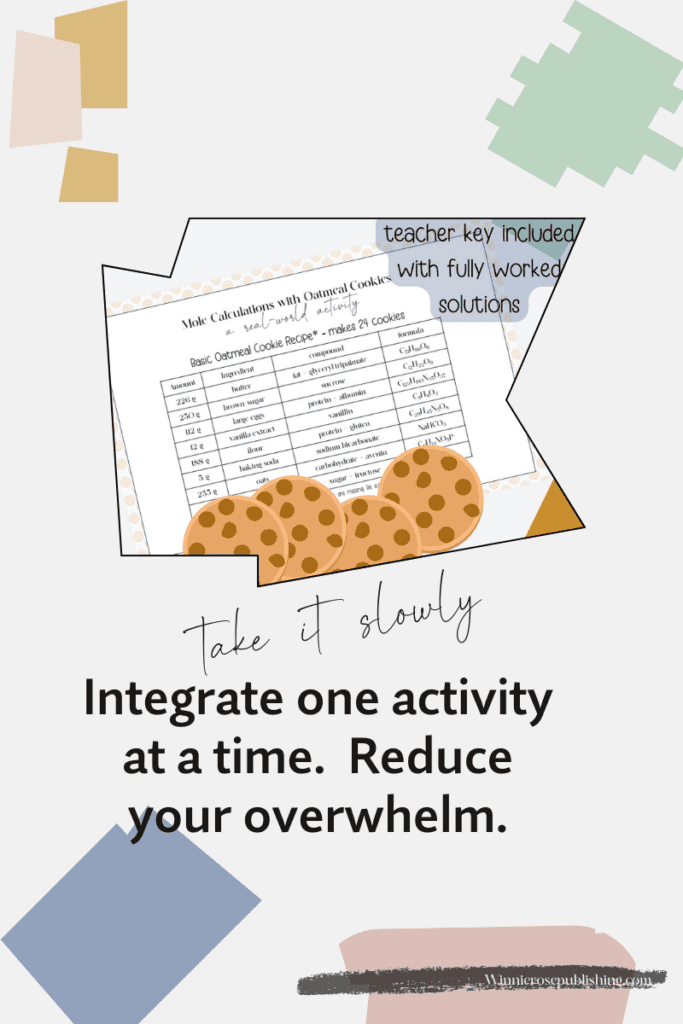
Real World Learning in the Classroom
When you decide you want some real-world activities in your classroom, it is best to not throw out everything and start fresh with a new methodology. That would be just too overwhelming. Instead, choose a topic where you find your old worksheet to be particularly boring and ineffective. Replace that one worksheet with a real-world activity instead and see how it goes. You can make the new activity an in-class thing for participation, or you can have students submit it as graded work. Your choice. My advice is to not add in a new activity on top of what you are already doing, but rather replace a current activity with a new one. Be sure students understand that the point is still learning how to do the problems or understand the activity and that this new activity is not ‘throw away’ or for entertainment. In no time at all, your students will be making connections to examples of chemistry in everyday life.



Pingback:how to increase kinesthetic activities in your chemistry classroom - WinnieRosePublishing
Pingback:How to teach chemistry so students become more informed citizens - WinnieRosePublishing